Are you a Quiet Speculation member?
If not, now is a perfect time to join up! Our powerful tools, breaking-news analysis, and exclusive Discord channel will make sure you stay up to date and ahead of the curve.
Eldrazi this. Eldrazi that. I feel like all I’ve read in the last month about Modern has to do with Eldrazi. Oh wait, that’s because it does all have to do with Eldrazi! Because Modern is an Eldrazi format.
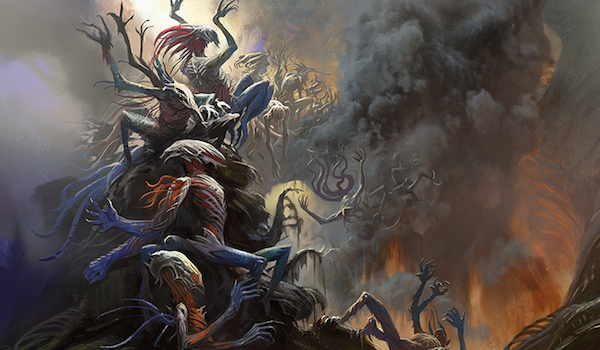
Grand Prix Detroit begins early tomorrow morning. I and a bunch of other Modern players will be thrown headfirst into a sea of tentacles, eyeballs, skinny legs, and Eye of Ugin activations. Aaron Forsythe will be there, but probably not to engage with us meaningfully about the future of Modern. I bet he’ll be walking around, peering over the carnage, laughing maniacally.
I didn’t work too hard preparing for this GP. Actually, I don’t think I’ve ever prepared so little for a major event. Still, in this article, I’ll discuss what I wish I were playing, what I will actually play, and how I got there.
[wp_ad_camp_1]
The Power of Bias
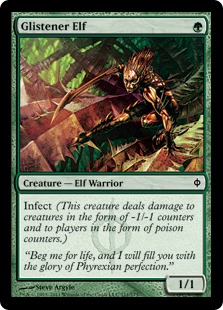 Tom Ross and Infect. Frank Karsten and Affinity. Patrick Dickmann and... oops, never mind. Every player has their preference, and Modern has shown us time and again that playing a strategy you're fond of and well-acquainted with yields results. For this reason, I'd advise anyone headed to GP Detroit for fun to play what they like. Sure, the metagame will be warped into oblivion, and Day 2 will probably be overrun with colorless behemoths. But even if Eldrazi makes up a whopping 30% of the overall metagame, odds are slim you'd face the archetype more than a few times on Day 1.
Tom Ross and Infect. Frank Karsten and Affinity. Patrick Dickmann and... oops, never mind. Every player has their preference, and Modern has shown us time and again that playing a strategy you're fond of and well-acquainted with yields results. For this reason, I'd advise anyone headed to GP Detroit for fun to play what they like. Sure, the metagame will be warped into oblivion, and Day 2 will probably be overrun with colorless behemoths. But even if Eldrazi makes up a whopping 30% of the overall metagame, odds are slim you'd face the archetype more than a few times on Day 1.
That said, if your goals is to Top 8 the event, you'll need to take a different course entirely - especially if Eldrazi isn't your cup of tea. More on strategically approaching this metagame in the next section. For now, let's focus on the benefits of paying what you know and love.
Why Pick Favorites?
Choosing and playing a deck you enjoy has one very obvious benefit - it ensures you'll have a good time. Few people can play Magic 24 hours a day, and if you're already budgeting your time to fit tournaments or even casual sessions with friends, you'd better be playing something you like. I think part of the reason we hear pros complain about certain formats is because some decks are so strong it would be silly, from a competitive viewpoint, not to play them. That forces these win-minded players to pilot decks they don't necessarily enjoy, and who likes that?
Having intimate knowledge of a deck also benefits players strategically. That knowledge allows them to tweak their lists so they optimally attack a certain metagame, or to make educated decisions while playing.
Playing a pet deck has one notable extra advantage in Modern, a format defined as much by its impetus on players to mulligan aggressively as by anything else. In "Modern Shouldn't Be a Pro Tour Format," Owen Turtenwald goes into some specifics on this theory, eventually writing:
"In most of the matchups I playtested in Modern, the game ended on turn 4. That’s insane! If the game ends on turn 4, you simply don’t have time to draw out of a risky keep. This is untrue of Standard, Draft, and Sealed, where you often play a match where both decks are slow and cumbersome. For that reason, you can keep a wider range of opening hands, because the cards you start with don’t hold all the power over how the game is decided."
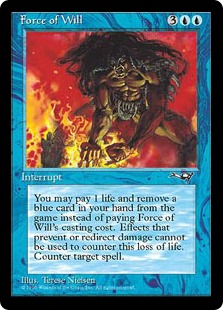 Owen noticeably excludes Legacy from his list of formats without this heavy incentive to mulligan. In that format, a catch-all, 0-mana answer -- Force of Will -- allows players to keep a wider variety of hands in the dark against opponents who may just lead with Aether Vial, but could also potentially be trying to kill you on turn one with Goblin Charbelcher.
Owen noticeably excludes Legacy from his list of formats without this heavy incentive to mulligan. In that format, a catch-all, 0-mana answer -- Force of Will -- allows players to keep a wider variety of hands in the dark against opponents who may just lead with Aether Vial, but could also potentially be trying to kill you on turn one with Goblin Charbelcher.
Since Modern lacks these sorts of answers, opening hands carry a huge amount of pressure and frequently get shipped away. Owen dislikes this aspect of Modern, but as someone who very much enjoys taking mulligans, it's one of my favorite things about the format. Taking mulligans can be as simple as shipping hands without Stony Silence, but often, many variables enter the equation. A deeper knowledge of your deck will almost always lead to better mulligan decisions.
What I Like
Over the last decade, I've gotten to know my own preferences pretty well. Here's what I enjoy doing in a game of Magic:
- Mulliganning aggressively for the right hand
- Attacking almost every combat phase
- Interacting with opponents during each stage of the game
- Winning -- but just barely
With these four aspects of my dream deck in mind, here's what I would have liked to play this weekend.
What I Won't Play in Detroit
I mostly stick to my guns in Modern. Temur Delver has been my favorite Modern deck since Innistrad came out in 2012, and I've played it since.
Monkey Grow, by Jordan Boisvert
If I could, I would bring Temur Delver to GP Detroit. After all, it does everything I like best!
- Mulliganning: If I don't mulligan with this deck I feel like I'm cheating.
- Attacking: Just about every turn, besides the first.
- Interacting: Almost every card in the deck disrupts opposing plays somehow.
- Winning: Hard to count how many times I've won on three life, or without any cards left in hand.
Unfortunately, I don't think it's playable for a couple reasons.
It's too slow. Since when is turn one Delver, turn two Mandrills "too slow" for Modern? Since Reality Smasher. This deck often disrupts opponents on turn 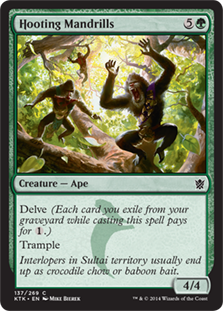 one and then plays a superior threat on turn two to clean up the mess (for instance, Bolting a Hierarch and slamming Tarmogoyf). That line only works because the turn two play should outclass anything opponents can muster on their own turn two - no two-mana play in Modern outdoes Tarmogoyf or Hooting Mandrills in terms of board presence. From turn three onwards, we can begin attacking and using countermagic to ensure opponents never surpass us on the board.
one and then plays a superior threat on turn two to clean up the mess (for instance, Bolting a Hierarch and slamming Tarmogoyf). That line only works because the turn two play should outclass anything opponents can muster on their own turn two - no two-mana play in Modern outdoes Tarmogoyf or Hooting Mandrills in terms of board presence. From turn three onwards, we can begin attacking and using countermagic to ensure opponents never surpass us on the board.
Against Eldrazi, though, things don't really work that way. Thought-Knot Seer is a turn two play that gives Tarmogoyf and Mandrills a run for their money, while Reality Smasher charges just one mana more to outclass any of Delver's threats at all points of the game.
Splash Damage. In "On Power and Positioning," Merfolk lover Michael Majors describes the influence of splash damage on deck choice:
"Worship, Ensnaring Bridge, and Ghostly Prison, despite not being “hard locks” against Eldrazi, are actually all quite close to that against Merfolk.
Even though I never lost a match to one of the above three cards, it doesn't make a whole lot of sense to enter a tournament where, if everyone else is preparing for the best deck just like you are, they are also inadvertently improving their matchup against you."
Temur Delver suffers the same splash damage problem as Merfolk in this metagame. Jund with mainboard Damnation, UW Control decks packed with Condemn and Supreme Verdict, and even proposed strategies as diverse (and creature-heavy) as Wilted Abzan packing Dismembers, Lingering Souls, and Path to Exiles all line up very well against Delver strategies.
What I Will Play At GP Detroit
Here she is, in all her colorless glory:
Colorless Eldrazi Stompy, by Jordan Boisvert
So, how well does Colorless Eldrazi Stompy fit into my fun-spectations?
- Mulliganning: A+! Serum Powder even adds another dimension to my mulligans.
- Attacking: Another pass with flying colors. Mimic and Endless One make sure this deck comes out swinging.
- Interacting: Dismember's an old favorite, as is Chalice of the Void. That's just seven interactive cards, not counting Thought-Knot Seer; this deck is still pretty linear at its core.
- Winning: When I win, it's not generally by any small margin. I've found you either destroy your opponents with Eldrazi or get crushed yourself.
Colorless Eldrazi Stompy obviously does qualify as a super-enjoyable deck for me. It still hits a couple of my checkmarks. Unfortunately, I think it's the most competitive deck that I can play without absolutely hating myself this weekend.
Explaining the Build
It took me awhile to arrive at this list. I played around with a wild variety of configurations. At one point I ran four Endbringers in the main, and at another I dropped down to one and maxed out on Oblivion Sower. I'd excluded the Matter Reshapers until about a week ago, when I started noticing interactive decks like Jund and Blue Moon making small comebacks locally and online.
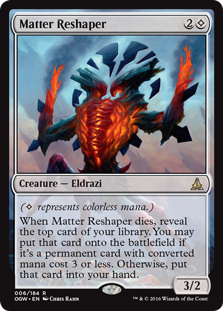 Matter Reshaper: Turns opposing removal spells into ramp. This deck has more of a late-game in Game 1 than most colorless lists, so Reshaper does more than usual here.
Matter Reshaper: Turns opposing removal spells into ramp. This deck has more of a late-game in Game 1 than most colorless lists, so Reshaper does more than usual here.
Endbringer: Opponents usually kill Smasher or Seer before I can even cast Endbringer, and when he resolves against an opponent without an answer, he wins the game on his own. I had to drop down to two copies because of his weakness to Dismember, Terminate, and Path to Exile, but having Reshapers as additional removal magnets helps a great deal. Endbringer helps against aggressive decks and can beat opponents trying to lock us out with Ensnaring Bridge, so I prefer him to Oblivion Sower right now. If I could modify the list for Day 2 only, I’d play Sowers main instead - that card just dominates the mirror.
 Serum Powder: I’m down to three Powders after cutting one for a fourth Matter Reshaper. I did a bunch of opening hand tests to see whether Powder helped or hurt more, and I still think it does enough to merit inclusion. Finding Sol lands before the game begins helps race UW or GR Eldrazi, but post-board I cut the Powders against Eldrazi decks that might bring in Sower. Luckily, nobody mainboards the 5/8. The primary opportunity cost of playing Powder main is room for interactive spells like Ratchet Bomb and Spellskite, which then find themselves in the sideboard. Since we have no way to dig for these cards during a game, not all games are guaranteed to go long, and these cards especially help against faster decks anyway, I’m okay with this trade-off if it means increasing my Sol land consistency.
Serum Powder: I’m down to three Powders after cutting one for a fourth Matter Reshaper. I did a bunch of opening hand tests to see whether Powder helped or hurt more, and I still think it does enough to merit inclusion. Finding Sol lands before the game begins helps race UW or GR Eldrazi, but post-board I cut the Powders against Eldrazi decks that might bring in Sower. Luckily, nobody mainboards the 5/8. The primary opportunity cost of playing Powder main is room for interactive spells like Ratchet Bomb and Spellskite, which then find themselves in the sideboard. Since we have no way to dig for these cards during a game, not all games are guaranteed to go long, and these cards especially help against faster decks anyway, I’m okay with this trade-off if it means increasing my Sol land consistency.
Chalice of the Void: I’ve been playing Chalice in Eldrazi since Oath of the Gatewatch was first spoiled, and I still think it has a place in the deck, even with the largely impervious other Eldrazi decks boasting a 30% metagame share. Against those decks, Chalice at least shuts off Ancient Stirrings and Path to Exile, one of the best outs to an Endbringer in Modern.
I tried moving three Chalices to the sideboard at one point to play Gut Shot instead. Gut Shot had a lot more relevance against Colorless Eldrazi Stompy, but was even worse than Chalice against UW and GR. Killing a Skyspawner stinks since opponents keep the Scion, and the deck lacks any other targets for Gut Shot besides Eldrazi Mimic. Additionally, the Simian Spirit Guides do much less in the mainboard without Chalice, and Chalice from the sideboard performs much worse than it should without Guides in the deck. I’m down to three copies of Chalice main instead of four, but haven’t yet missed the last one. In matchups where I need the artifact badly, Serum Powder helps me mulligan into it.
SB - Ratchet Bomb: Bomb has tested very well for me out of the board, killing a swarm of Scions or huge Endless Ones from Eldrazi, hard-to-answer permanents like Worship, or dorks and attackers in Infect.
SB - Crucible of Worlds: Crucible may become a third Sower before the tournament starts, because sometimes the artifact does nothing. Most Eldrazi decks max out at two basics, though, and I’ve locked a few players out of games by recurring Ghost Quarters once they’ve searched for Island and Plains.
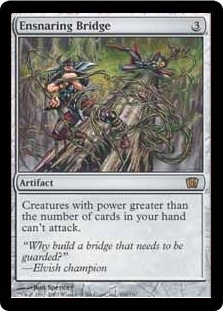 SB - Ensnaring Bridge: Just kidding! I played Ensnaring Bridge in my first Endbringer list, but have since cut them. Many Eldrazi lists popping up are beginning to play Endbringer in the main as a one-off to beat Ensnaring Bridge in Game 1, and others pack him in the sideboard, sometimes with their own Bridges. In the mirror, UW has Disenchant, and GR has Ancient Grudge and World Breaker, all of which means bad news for the Bridge plan. UW can also disrupt this angle with a Worship, which stops Endbringer from pinging. (Fun fact: I tried cards as silly as Pierce Strider to get around Worship with a Chalice at 2 on the field to protect against Disenchant. You can guess how that worked out - I’m back up to three Ratchet Bombs now!)
SB - Ensnaring Bridge: Just kidding! I played Ensnaring Bridge in my first Endbringer list, but have since cut them. Many Eldrazi lists popping up are beginning to play Endbringer in the main as a one-off to beat Ensnaring Bridge in Game 1, and others pack him in the sideboard, sometimes with their own Bridges. In the mirror, UW has Disenchant, and GR has Ancient Grudge and World Breaker, all of which means bad news for the Bridge plan. UW can also disrupt this angle with a Worship, which stops Endbringer from pinging. (Fun fact: I tried cards as silly as Pierce Strider to get around Worship with a Chalice at 2 on the field to protect against Disenchant. You can guess how that worked out - I’m back up to three Ratchet Bombs now!)
Motivation and Consistency
Leading up to GP Charlotte, I poured months into building the perfect Temur Delver list. Despite some crushing losses to Jund right before and at the start of Day 2, Delver performed very well, and I had a great time piloting the deck I’d spent so much time on.
That won’t happen this weekend. I don’t even know if my deck isn’t just a worse UW Eldrazi. Some more testing would probably let me know, but it was hard for me to self-motivate and build something better for this GP. I don’t think I’ll win or necessarily come close. I’m sure it will still be fun - I’ve never been to Detroit, and can’t wait to see my beloved format in its death throes.
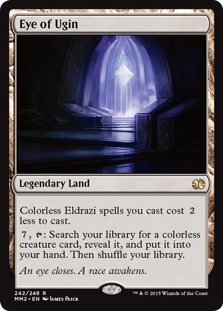 There are two reasons I prepared so casually for Detroit. First, after a lot of testing for the Gatewatch, I realized nothing was even close to as good as Eldrazi. Navigating a broken format just isn’t very appealing to me.
There are two reasons I prepared so casually for Detroit. First, after a lot of testing for the Gatewatch, I realized nothing was even close to as good as Eldrazi. Navigating a broken format just isn’t very appealing to me.
Second, I don’t think the Eldrazi mirror match comes down to skill. Skill is a factor I value highly when it comes to competitive play, which is why I favor tricky decks like Temur Delver. Eldrazi is mostly about playing threats on curve and drawing a bunch of Sol lands. In studying mirror matches and playing them myself, I’ve found Eldrazi to be more variance-based than most decks; when it opens a bunch of Sol lands, it wins, and when it doesn’t, it loses. That’s not my kind of Magic, and being exposed to it so much - either on my side of the table, or on the other - has turned me off from Modern significantly.
"Eye" of the Storm
On the bright side, GP Detroit should put the final nail in the coffin for Eldrazi. Despite my whining, I’ve really enjoyed watching the weird journey Modern has taken since Thought-Knot Seer took over the format, and all that oppression will culminate in something truly bizarre this weekend. Good luck to everyone attending the GP, and to all those at home in store for a hundred more Eldrazi feature matches!





http://www.eldrazinexus.com
I’d normally mark this kind of remark as spam, but I’m leaving this one comment up as a way to officially respond to anyone who thinks the same way.
This IS an Eldrazi format. Modern has never been so warped as today and we’re not going to dig our heads into the sand and lie about it just to artificially diversify content. Why do you think other content sites have cut back on Modern content in the past few weeks? There is no aspect of the current Modern format that is not affected by the Eldrazi, and there are few (if any) aspects of future Modern policy that won’t be impacted by the historical precedent of the Eldrazi. We will continue to run at least 1 article per week that doesn’t have as much to do with Eldrazi as the rest, but the content balance will overall reflect the format balance.
I’m aware, I appreciated the intro and hence was playing into it: “Eldrazi this. Eldrazi that. I feel like all I’ve read in the last month about Modern has to do with Eldrazi. Oh wait, that’s because it does all have to do with Eldrazi! Because Modern is an Eldrazi format.”
Not everything is negative
Always hard to tell online. Hopefully we’ll be out of the Eldrazi woods soon!
Even with an Eldrazi ban, i’m not looking forward to the format returning to Zoo, Burn, Infect, Merfolk, Tron, and Affinity. That’s what it was post Twin ban, pre Eldrazi menace; nothing but linear and/or aggro. We didnt get much time to complain about it before Oath came out.
I just hope people remember that as they collectively cheer an Eye ban, but, i guess that’ll be an argument for later. Modern has just been really shitty lately as aggro decks continually get better while decks like Twin get banned.
Michael,
I sadly agree. You are absolutely right, we definitely didn’t get enough time to complain before eldrazi ran rampant. I am not usually one to complain (this eldrazi thing is different let’s be completely honest) so I wouldn’t have said much about the post twin format, but to say it didn’t change drastically and skew towards aggro is just dishonest or ignorant. It was quite amazing just how much of a difference a twin ban made on the format. Sure, it probably would have recalibrated and the control junkies like myself (and Trevor lawl) would have brewed for it, but it was certainly noticeable. eh, is rather go back to that and actually have a format that can lead to soversity through brewing than the garbage we have now tho.
Oh and I got into legacy because of all this eldrazi stuff, so I guess glass is half full! Shamelessly, I got into legacy by playing eldrazi lol. I can’t even play eldrazi anymore in modern because it’s so boring. In legacy, the other decks actually have a chance/easily beat eldrazi, so it’s actually fun.